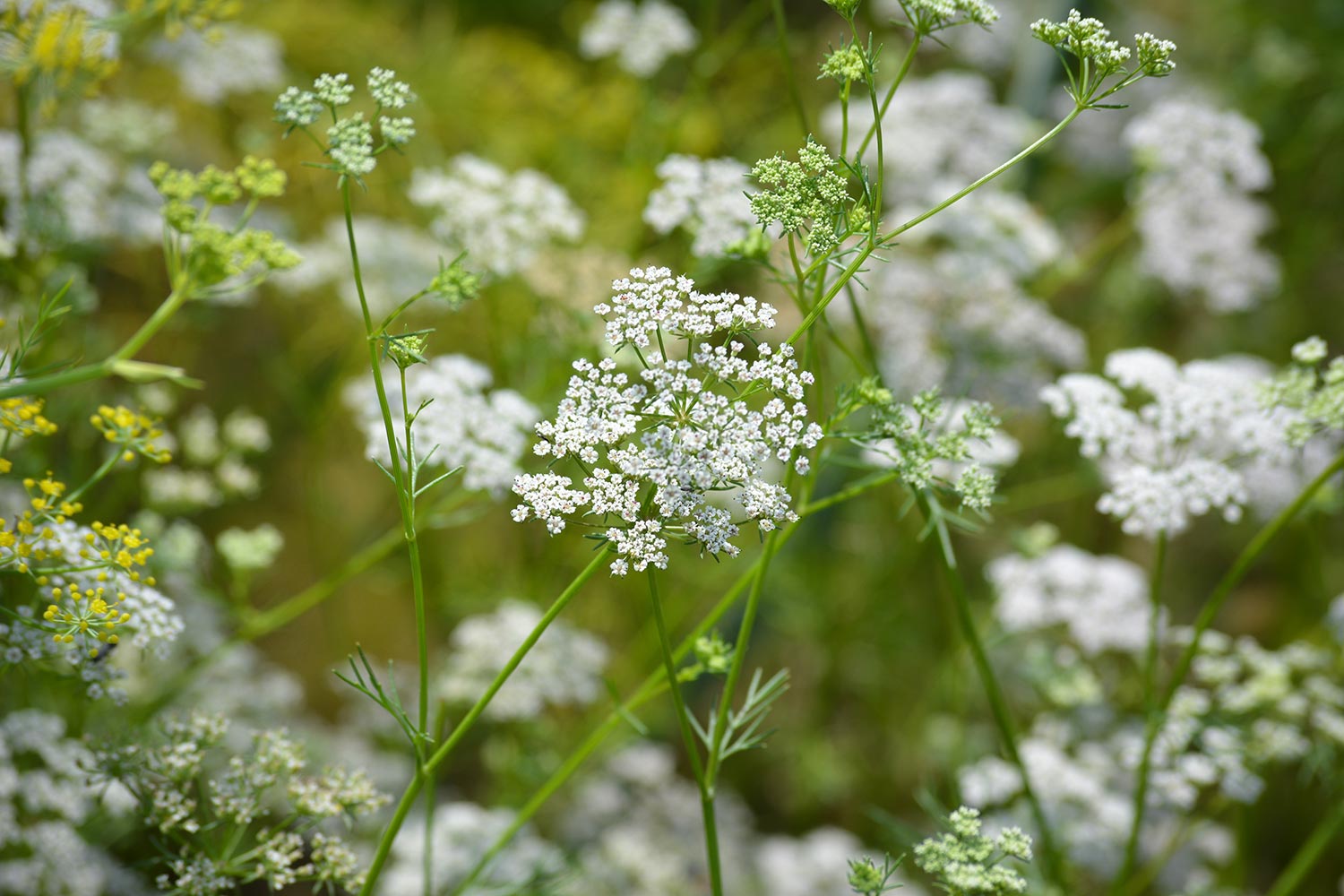25iMint and caraway beds

The last stop on the tour is a series of beds planted with different species of mint and caraway in front of the high-field MRT building. The beds are part of the artwork "Chirality" by Berlin-based artist Ulrike Mohr. More about the work can be found at the website.
Mint and caraway are herbaceous plants that have long been used both as spices and in traditional remedies. There are over 20 species of each of the two genera, native to temperate regions. The selection in these beds is based on the historical plant collection of the Emperor Charlemagne.
A common feature of mints and caraways is the bioactive molecule they contain, called carvone. This substance also explains why the mint and caraway beds are part of the artwork on the opposite side of the street. The sculptures there represent the two forms of carvone: S-(+)- and the R-(-)-carvone. Their chemical formula is identical: C10H14O. The only difference between the forms is their spatial arrangement: they mirror each other like left and right hands. This single difference makes S-(+)-carvone smell like caraway to us, and R-(-)-carvone smell like mint.
Caraway - Carum Carvi
Caraway, also called true caraway is a herbaceous plant that grows to about 30 to 80 centimeters in height. The stem is ridged, glabrous and multi-branched. The umbels bear white to pink flowers. From them develop the brown, slightly curved, clearly ribbed and tapered towards the ends fruits. These individual fruits, called caraway "seeds", have an intensely aromatic scent and are used as a spice and tea.
Caraway
Caraway, botanical name Carum, is a genus of plant within the umbelliferae family (Apiaceae). The generic name Carum is derived from the Arabic word karwija. The German word Kümmel goes back to the Latin term cuminum. This word is said to come from the Hebrew kammon. However, cuminum originally referred to cumin, which belongs to a different genus of plants, despite the relationship of the names. The German epithets of caraway varieties often refer to their natural habitats, in expressions such as mountain or meadow caraway.
The dried, ripe fruits of caraway are used for various purposes. They contain essential oils with S-(+)-carvone and other terpenes. They stimulate the digestive glands and have anti-flatulent and antispasmodic properties, and is added as a spice to foods such as cabbage dishes, which are difficult to digest. The fruits are infused as tea, or caraway essential oil is extracted from them. Both forms are used for mild cramp-like discomfort in the stomach and intestines, flatulence, bloating and nervous heart-stomach complaints. In the past, caraway was also considered a milk-promoting agent. Finally, it is also used as the basis of a liqueur.